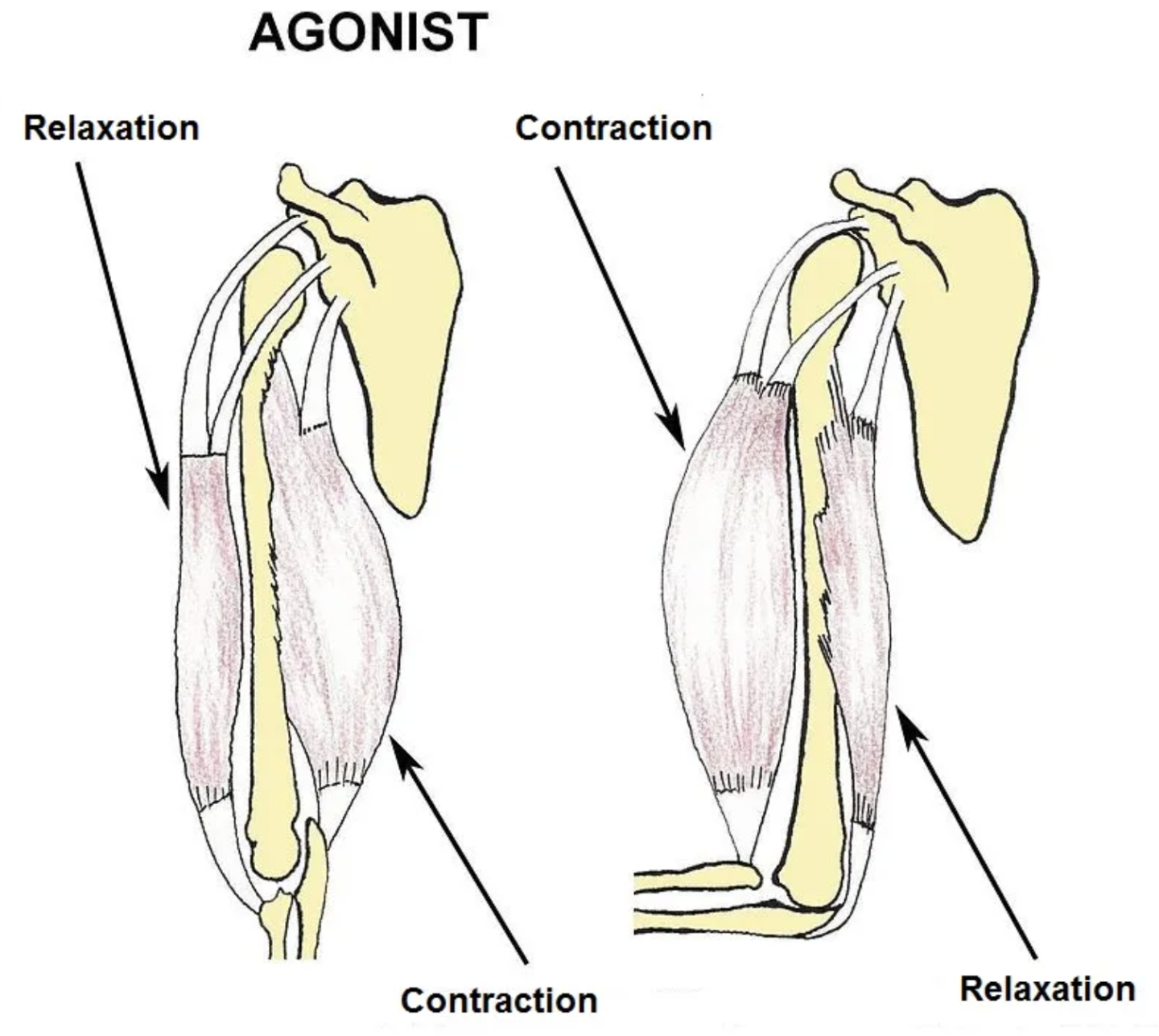Definition
Definition
Soft Tissue Mobilization (STM) is an umbrella term used to describe manual, hands-on techniques that manipulate and promote the movement of soft tissues such as fascia, muscles, tendons, etc. You will see the term applied to many different forms of manual therapy, however, in this course, we focus on the utilization of movement, both active and passive, during the manual manipulation of tissue.
Passive STMs
During passive soft tissue mobilizations, the therapist is performing a compression, effleurage, pettrisage, or decompression with one hand, while moving the client's body or limb with the other hand. In most passive STMs, the therapist will move the client in a way that lengthens the muscle or fascia under the therapist's pressure
To understand passive STMs, you want to have a good understanding of what actions make a muscle shorten or lengthen. Much of this will be covered in this course.
Active STMs
In active STMs, the client is going to engage in the movement themselves. You must start with passive STMs first, to expose the client to the movement. Fortunately, the only difference between most passive STMs and active STMs is that the client engages in the movement that you would perform for them in the passive STM. If you know that passive STM, you can likely figure out the active STM.
So what’s the difference?
Active STMs take advantage of a neuromuscular reflex called Reciprocal Inhibition (RI). RI is a phenomenon of voluntary movement in which the activation of an alpha motor neuron automatically inhibits the alpha motor neuron of the opposing or antagonist muscle. For example, if you actively contract or engage your quadriceps to perform knee extension, the alpha motor neuron of your hamstrings will automatically inhibit to allow the movement to occur. With STMs, we can use RI to help promote the downregulation of hypertonic or overactive/ shortened muscles that may be restricting movements or causing trigger points.
To understand active STM you want to know antagonist pairings, as well as the actions that cause a muscle to lengthen. The goal is to have the client perform a movement that causes the antagonist to engage while also lengthening the targeted tissue as we apply pressure. Fortunately, these are the same thing, which will be covered more in the course.
When to use Passive STM
Passive techniques are best in a spa setting or a session in which the primary goal is to get the client to relax. They require no engagement from the client. Generally, these are best to start with because they familiarize the client with the movement and may be more comfortable for the client.
When to use Active STM
Active techniques are best with seasoned or returning clients. Clients who have been exposed to passive STMs can "graduate" to active STMs. Clients that prefer "deep" or "heavy" work may find active STM more desirable. Active STMs are also best in a rehab setting in which corrective or therapeutic exercise may be performed after. Active STMs are also often preferred by athletes or athletic populations because they relate therapy to movement, especially movements that they may be repeating often in their activity or sport.
Lesson Summary
Soft Tissue Mobilization (STM) is a manual therapy technique that involves manipulating and promoting the movement of soft tissues such as fascia, muscles, and tendons. There are two types of STM: passive and active.
Passive STMs
- During passive STMs, the therapist uses one hand to perform compression, effleurage, petrissage, or decompression on the soft tissues.
- With the other hand, the therapist moves the client's body or limb in a way that lengthens the targeted muscle or fascia under pressure.
- Passive STMs require a good understanding of what actions cause muscles to shorten or lengthen.
Active STMs
- In active STMs, the client engages in the movement themselves.
- Before engaging in active STMs, the client should first be exposed to passive STMs to familiarize themselves with the movement.
- The difference between passive and active STMs is that the client actively performs the movement that the therapist would typically do in a passive STM.
- Active STMs take advantage of a neuromuscular reflex called Reciprocal Inhibition (RI) to downregulate hypertonic or overactive muscles.
- RI automatically inhibits the alpha motor neuron of the opposing muscle, allowing the desired movement to occur.
- Knowing antagonistic muscle pairings and the actions that cause a muscle to lengthen is important in active STMs.
When to use Passive STM
- Passive STMs are best used in spa settings or sessions where relaxation is the primary goal.
- They do not require any engagement from the client.
- Passive STMs are ideal for familiarizing the client with the movement and providing a comfortable experience.
When to use Active STM
- Active STMs are suitable for seasoned or returning clients who have been exposed to passive STMs.
- Clients who prefer "deep" or "heavy" work may find active STMs more desirable.
- Active STMs are beneficial in a rehab setting where corrective or therapeutic exercise follows the therapy session.
- Athletes or athletic populations often prefer active STMs because it relates therapy to movements they frequently perform in their activities or sports.

